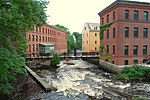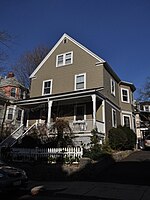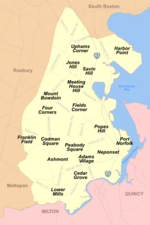Cristo Rey Boston High School
1921 establishments in MassachusettsCatholic secondary schools in MassachusettsCristo Rey NetworkEducational institutions established in 1921High schools in Boston ... and 1 more
Poverty-related organizations
Cristo Rey Boston High School is a private, Roman Catholic coeducational high school in Boston, Massachusetts. The school was founded in 1921 as St. John's High School, and opened in 1951 as an independent school, North Cambridge Catholic High School. The school moved from Cambridge to Dorchester in 2010. It has 376 students in grades 9-12.
Excerpt from the Wikipedia article Cristo Rey Boston High School (License: CC BY-SA 3.0, Authors).Cristo Rey Boston High School
Savin Hill Avenue, Boston Dorchester
Geographical coordinates (GPS) Address Nearby Places Show on map
Geographical coordinates (GPS)
| Latitude | Longitude |
|---|---|
| N 42.312222222222 ° | E -71.054166666667 ° |
Address
Cristo Rey Boston High School
Savin Hill Avenue 100
02125 Boston, Dorchester
Massachusetts, United States
Open on Google Maps









